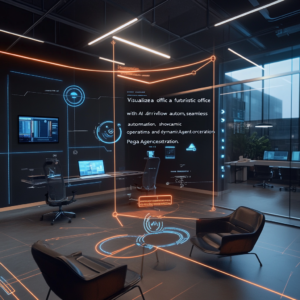
Holograms boost 3D printing efficiency and resolution
In the splendidly intricate world of 3D printing, we've reached a tipping point where holographic technology is not just an intriguing sideshow but a groundbreaking catalyst. Imagine a realm where your wildest design ideas can leap off the screen with the finesse of a magician pulling a rabbit from a hat. Buckle up—this is a rollercoaster ride through the magical landscape of holograms and their revolutionary impacts on 3D printing.
Let’s dive right into the rather mind-boggling concept known as Holographic Tomographic Volumetric Additive Manufacturing (TVAM). Now, that’s a mouthful! Picture this: researchers from the École Polytechnique Fédérale de Lausanne (EPFL) and the South Denmark University (SDU) Centre for Photonics Engineering have taken the world of 3D printing up several notches by integrating holographic technology into the core of TVAM.
So what’s the traditional TVAM scene like? A little mundane if we’re being honest. You’ve got your laser light humdrum, illuminating a spinning vial of resin. This procedure is about as efficient as a sloth running a marathon—only about 1% of that sweet light energy actually makes it to the resin to shape it into something magnificent. Kind of like if you ordered a full-course meal and your server delivered just a saltine cracker.
But lo and behold! Enter the holographic innovation: instead of just splashing light at random, we're projecting three-dimensional holograms that dance upon that merry spinning vial. Unlike the clunky method of merely using the amplitude of light waves, this snazzy holographic approach pays attention to the phase of the light waves—an intricate ballet if you will. Every pixel, every beam contributes consistently across every plane, which means higher light efficiency and far better spatial resolution. Are you starting to see the magic here?
Let’s not forget to tip our hats to Professor Jesper Glückstad, the luminary who brought us an ingenious technique known as HoloTile. This innovative method layers multiple holograms to obliterate the nastiness of speckle noise—those pesky light interferences that turn your crystal-clear image into a haphazard dot-to-dot exercise. By saying goodbye to grainy images, we’re not just enhancing aesthetics; we’re making precision a mandatory guest at the holographic party.
Then there’s the pièce de résistance: the self-healing hologram beams. Yes, you read that correctly! These beams can navigate through resin like a superhero dodging bullets, unaffected by small particles. Need to print with bio-resins or hydrogels loaded with precious cells for biomedical applications? This method is your new best friend. Bio-printing life-sized models of body parts? Get in line; we’re just getting started.
Fast forward to another jewel in the crown of augmented 3D printing: the realm of two-photon lithography (TPL) where digital holography takes the wheel. Researchers at the Chinese University of Hong Kong have whipped up a TPL platform that operates like a finely-tuned sports car, harnessing femtosecond laser amplification alongside a digital micro-mirror device (DMD). What’s the upshot? A staggering resolution of 90 and 141 nanometers in lateral and axial directions, respectively! It’s like having a superpower that allows you to carve the finest details into a bean-sized object.
These fantastically high-resolution nanostructures could produce wonders ranging from micro-gears that can make your old clock jealous, to 2D diffractive surfaces that make even light play nice. And when they crank out 2,000,000 voxels per second, who wouldn’t feel a bit envious? This single-pulse strategy makes diffusion feel like a forgotten relic, ensuring precise control over structure formation.
But hold on, we’re just warming up! The acoustic wizards at Concordia University have stepped onto the stage with Holographic Direct Sound Printing (HDSP), a technique that sounds as whimsical as it is revolutionary. By employing acoustic holograms, they coax microscopic cavitation regions into creating complex 3D patterns with astonishing speed—improving printing time by a jaw-dropping 20 times. Gone are the days of waiting, while the printer hums a lackluster tune.
Picture it: tiny bubbles concerting with heat and pressure to harden resin into gorgeous structures, pulling off feats that would leave even the greatest artisans in awe. This method holds the potential to shape tissues, enable drug delivery systems, and repair tissues that are tucked away deep inside our bodies or in complicated structures like airplanes. Seriously, if that doesn't sound like cutting-edge futuristic wizardry, I'm not sure what does!
Now, pivoting to our good friends at the Leibniz Institute of Photonic Technology in Jena, they’ve unveiled phase-controlled holograms that can manipulate light in such intricate ways that they bring us multi-focal patterns in 3D. This is not your typical Saturday science project. No, these holograms are crafted via Two-Photon Polymerization (2PP) technology, allowing for the nuanced control of intensity and phase. Why bother with picky light bulbs when you can command light with the precision of a maestro conducting a symphony?
Application-wise, we’re talking quantum technology, life sciences, bioanalytics, and telecommunications, for starters. These holograms could redefine the nuances of microscopy or even give rise to parallelized 3D nanoprinting—essentially pushing the envelope of what we think is possible in nanophotonics and beyond!
To sum it all up in a more palatable bite, the marriage of holographic technology and 3D printing is nothing short of a revolution. From optical to acoustic to digital twists, we’re looking at transformations that offer phenomenal efficiency, unparalleled resolution, and delightful complexity in printed objects. Whether pushing the boundaries of biomedicine or opening exciting avenues in material sciences, the innovations we’ve peeked at today are only the tip of the holographic iceberg.
So, dear reader, if all this has you buzzing with ideas, tinkering thoughts, or simply a sense of wonderment, let me issue you this call to action: Want to stay up to date with the latest news on neural networks and automation? Subscribe to our Telegram channel: @channel_neirotoken
As we sail into a holographic future, remember to strap in and hold on tightly—the possibilities are bound to leave your mind spinning!

